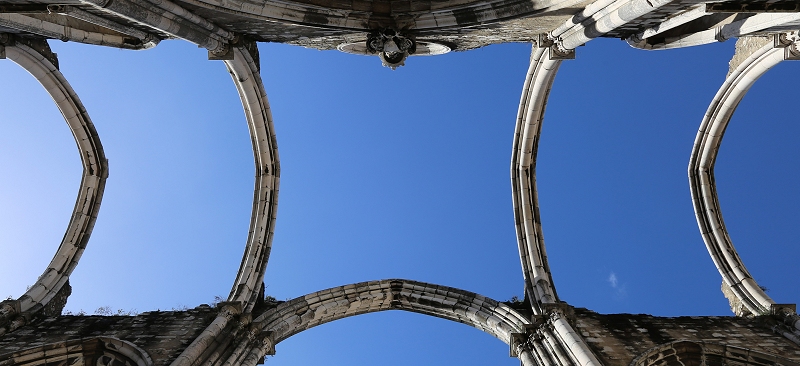Poor Frank Raw

Home | Church list | Blog posts | Why PoorFrankRaw? | Contact | Shop
Lettering in Lisbon: The Cathedral
Posted 23/10/2021
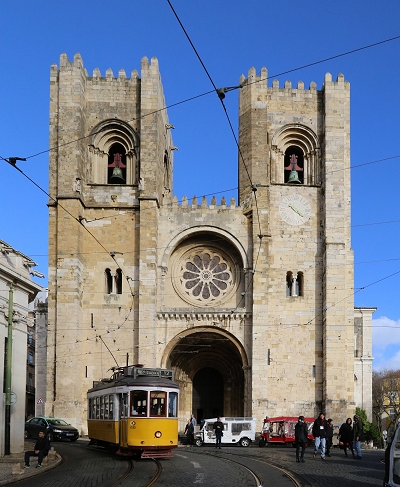 Lisbon, Portugal, has plenty of hand carved lettering to study, and in a variety of styles - Roman, Lombardic, blackletter, V cut, filled with mortar and with a dazzling array of ligatures. I speak no Portugese so if I make any linguistic assumptions or cultural faux pas here, feel free to let me know by email.
Lisbon, Portugal, has plenty of hand carved lettering to study, and in a variety of styles - Roman, Lombardic, blackletter, V cut, filled with mortar and with a dazzling array of ligatures. I speak no Portugese so if I make any linguistic assumptions or cultural faux pas here, feel free to let me know by email.
This post looks at the cathedral, known as the SÚ (the See of Lisbon), but take a look at Part II covering the amazing collection of carved lettering at the ruined Carmelite convent nearby.
Archaeologists have uncovered structures going back to the 8th century BCE beneath the cathedral, right through the occupation by Romans and, much later, Muslims. I'm here for the carved lettering though, so we'll be seeing tombs, memorials and random pieces of lettering seen around the building.
The 12th century cathedral has been much altered by the hand of man and by earthquakes. The interior is slightly gloomy and has a lot of dark corners with haphazardly placed fragments of carved lettering.
The Notary
There are few memorials on the walls, with or without lettering, just a few grand tombs, with the occasional surprise. In the ambulatory I found this small inscription in a dark corner:
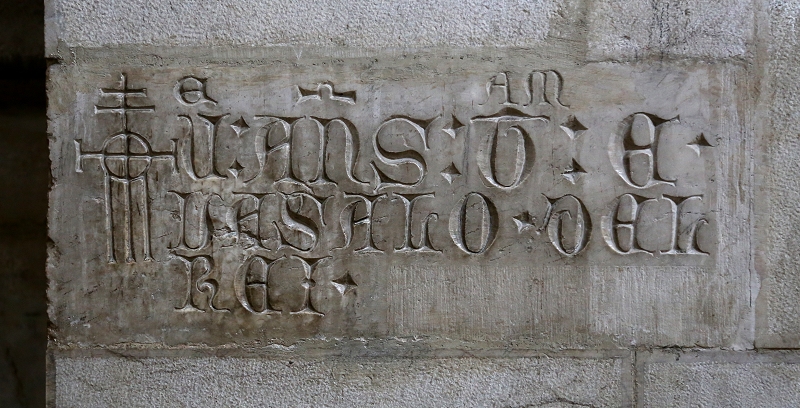
Slightly naively cut Lombardic letters, on a nice piece of marble, dating from the late 14th century referring to Vasque Annes, a notary and "vassal of the king". (Thanks to Isabelle Prim and Andrzej for leading me to some great Portugese references). This small memorial is surprisingly modest for someone of high status.
Courtesy of an old Portugese book on memorials in Lisbon1, mangled through Google Translate, we learn a bit more about the man. Vasque Annes was a notary and a high official of the Chancellery of king Alfonso IV and his son, king Peter I.
The fact that he was honoured with a grave in the chapel corridor of the cathedral is testament to his status in life. However, nearby, in another dark corner is a slightly more extensive and later memorial to a completely different kind of citizen.
The Shoemaker
Cut in blackletter, I think into the wall stone itself, is this memorial to a shoemaker:
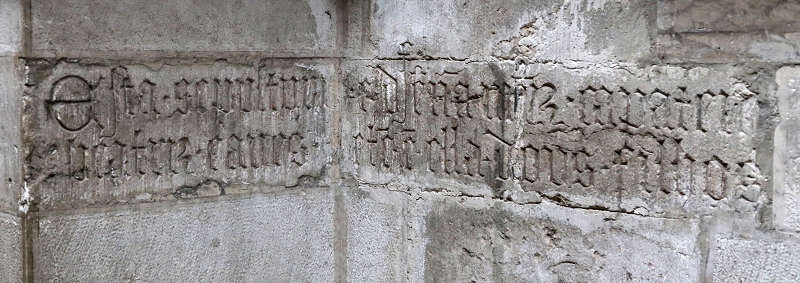
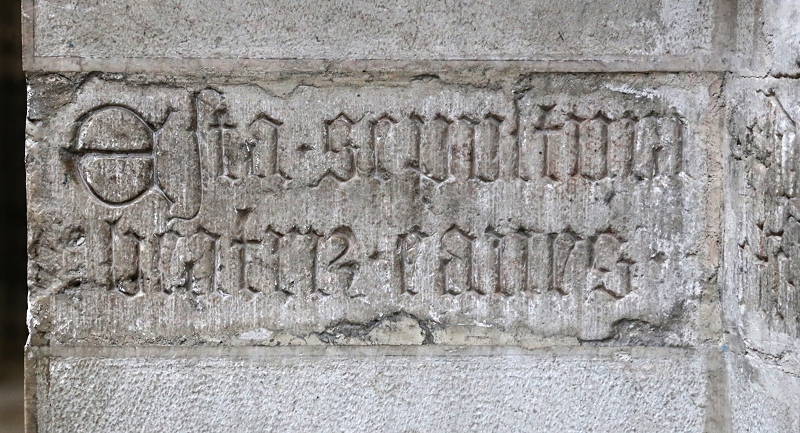
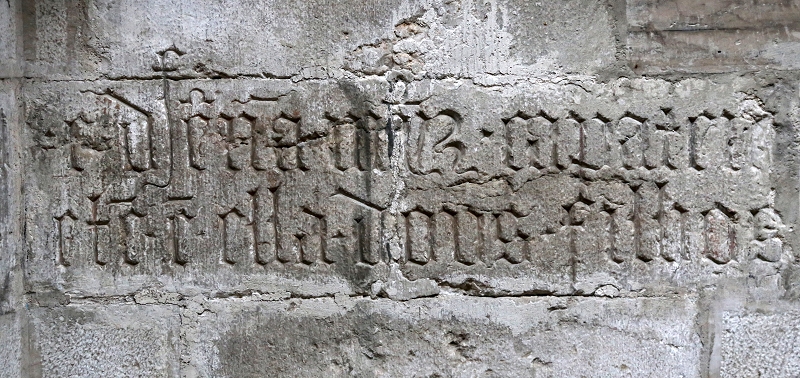
The inscription reads:
Esta Sepultura e d fena myz capateir
Beatriz Eanes e te e ella dous filhos
Which (as far as my negligible Portugese gets me) translates as "This tomb is for shoemaker Beatriz Eanes and her two sons". More background (in Portugese, see page 304) here. It seems Beatrice was poor, so how she came to be buried in the same ambulatory as the notary described above, we do not know. Perhaps her sons did well for themselves and could afford an upmarket location for their mother's grave.
The Knight
In a crooked passage near the cloisters there is a memorial on the wall to a knight of the Count of Borba.
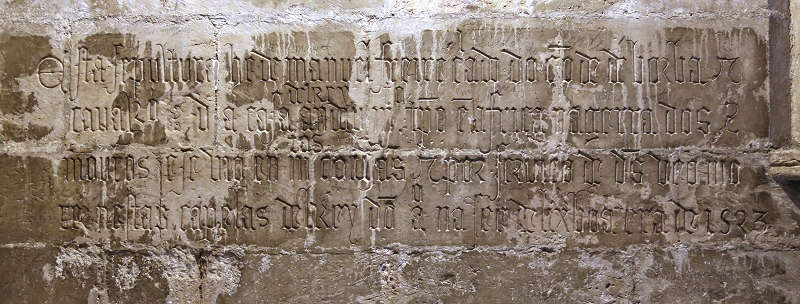
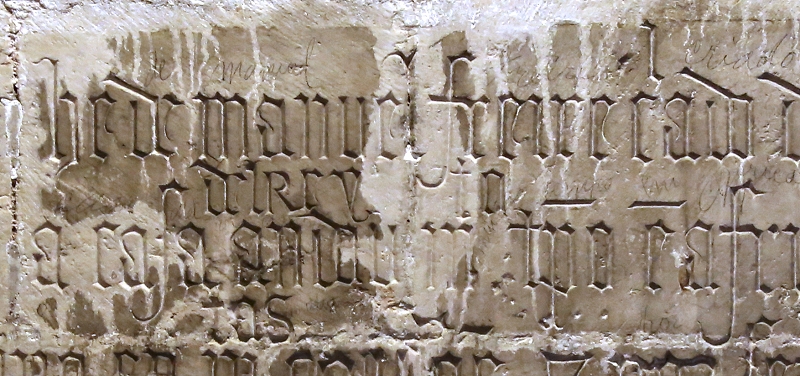
The inscription is dated 1523 - with a nice early appearance of Arabic numerals - and again there is more background (in Portugese, see page 295) here.
The inscription reads:
Esta sepultura he de manuel freire rado do conde de borba
cavaleiro da casa delrey andou mto tempo en africa na gerra dos
mouros e se vio en mtas cousas por servišo de ds veo
morrer nestas capelas delrey do ao na see de lixboa era de 1523
Which translates (again with help from Google) as:
This tomb is for manuel freire rado of the count of Borba
knight of the house of the king. Has been a long time in africa in the generation of
Moors and if you have seen many things for ds veo
service die in these delrey chapels steel in the section of lixboa was from 1523
This makes partial sense. Someone with better Portugese and a knowledge of the contractions and shortforms of the 1500s might be able to help me out.
The Lord
In a roomy Gothic chapel nearby lie the knight Lopo Fernandes Pacheco, the 7th Lord of Ferreira de Aves and his second wife, Maria de Vilalobos, forever reading the same page of her book of hours.
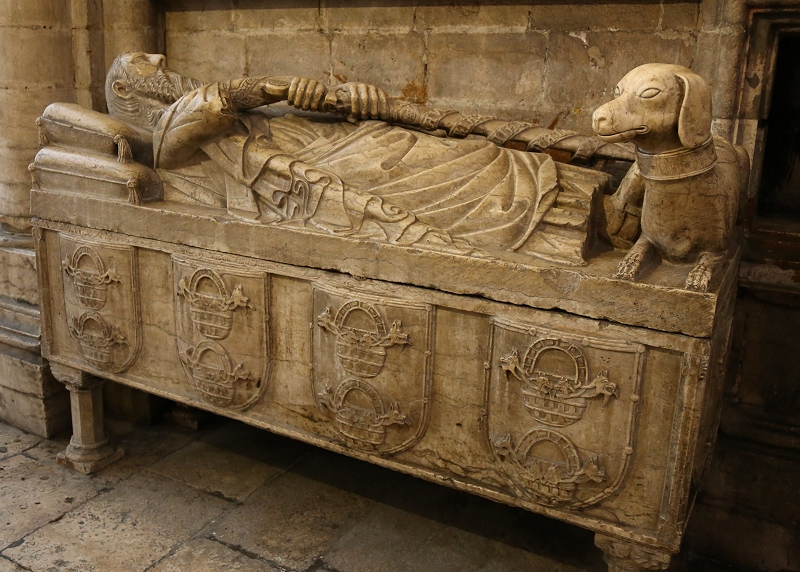
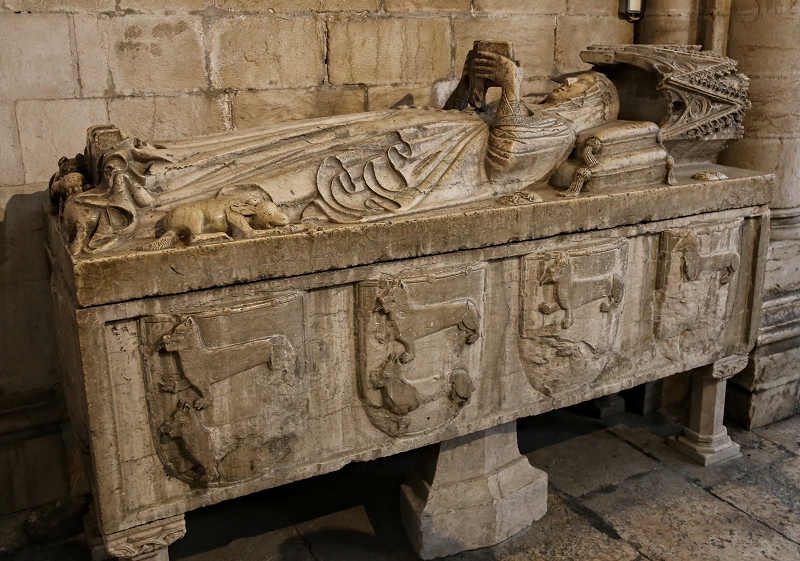
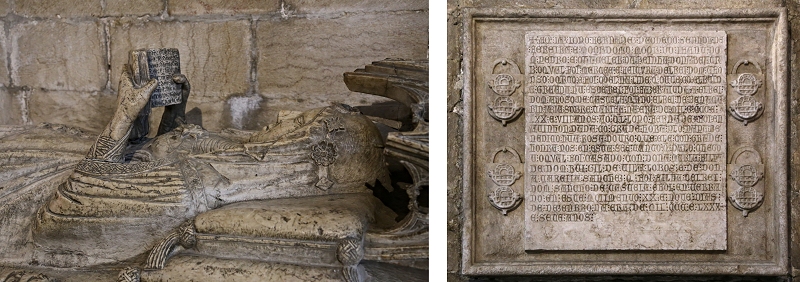
On the wall above Pacheco is a plaque inscribed with a long, but very readable Lombardic text, beginning, "Here rests Lopo Fernandez Pacheco Lord of Ferreira and court marshal of the Infante..." and ending "buried in this monument XX and nine days of December of the era a thousand CCCLXXX and seven years."
More background (in Portugese, see page 237) here and here in Portugese and German.

The Cloisters
The cloisters of the cathedral are bordered by a number of chapels, some are closed with iron gates, others are open. Between the chapels of St Alex and St Michael is a carved ?limestone panel detailing a benefactor's offer of masses for 20 poor people, presumably buried nearby.
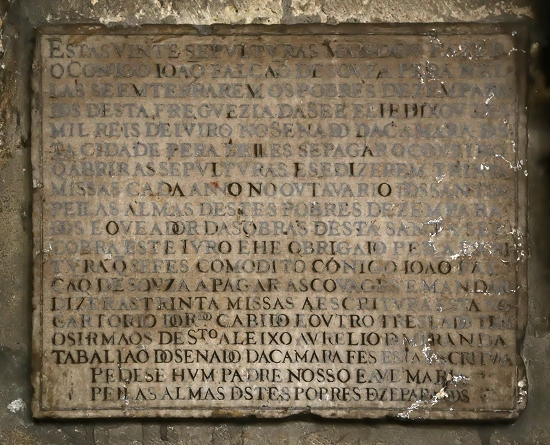 The layout is excellent, the carving is of a good standard, and the cut letters have been filled with a black mortar or paste. The surface of the paste has faded to grey, but where the paste has fallen away, it is hard to tell if the under-layer has retained the blackness or if the cuts have been painted in black.
The layout is excellent, the carving is of a good standard, and the cut letters have been filled with a black mortar or paste. The surface of the paste has faded to grey, but where the paste has fallen away, it is hard to tell if the under-layer has retained the blackness or if the cuts have been painted in black.
The inscription refers to the graves of 20 poor people, for whom masses are to be said. It gives detail of the money left for the masses, mentions that the cathedral office can confirm the facts in writing, and says (something like) "if you pay the graveman to open the tombs and say thirty masses each year...". The exact meaning is hard to make out, but it has a lot of parallels with benefactor boards in churches in the UK.
This inscription also features several ligatures which seem to be a strong feature of Portugese inscriptions of the 17th century onwards. Here we have DO, NN, DE, LL and VR. More of these later at the ruined Carmelite convent elsewhere in the city.

Fragments of the past
When we visited in 2016 the cloisters were undergoing deep and extensive archaeological excavations. The works had uncovered Roman streets and buildings, which were visible from the walkway. Perhaps as a result of this work, or maybe just because the cathedral is rich in old fragments of carved stone, there was quite a number of broken and contextless stones just resting on the floor and against the walls of the cloister.
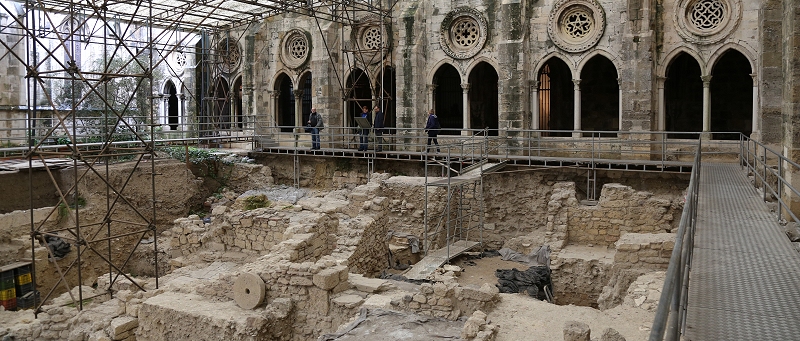
The fragments were a mix of Lombardic and blackletter - unfilled, and later Roman letters (with ligatures aplenty) filled with a dark paste. This seemed to be common at sites across Lisbon, and far more so than we see in the UK.
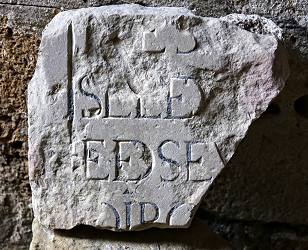
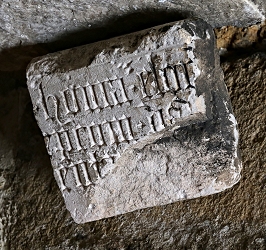
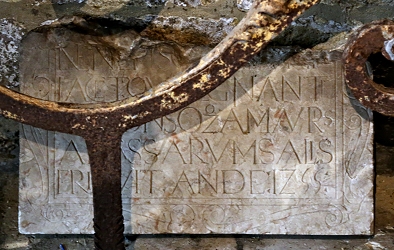
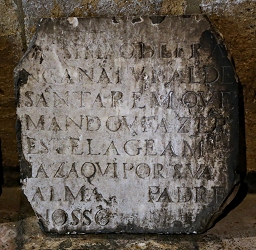
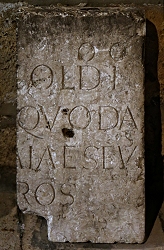
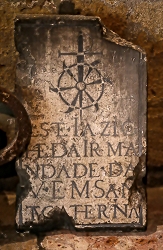
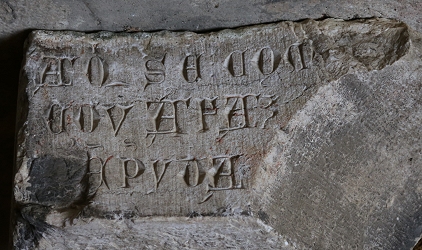
The Carmo
From the cathedral, walk about 1km NW and you come to the ruined Convent of Our Lady of Mount Carmel. Built between 1389 and 1423, largely ruined in the great earthquake of 1755, and now used as a museum, the buildings house a rich variety of hand carved lettering. See Carmo Part I and Carmo Part II for details.
